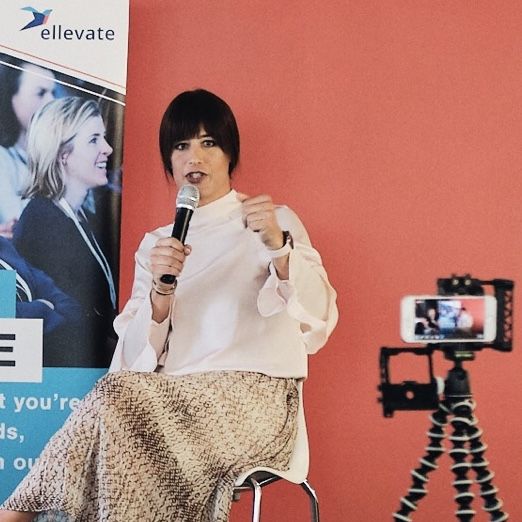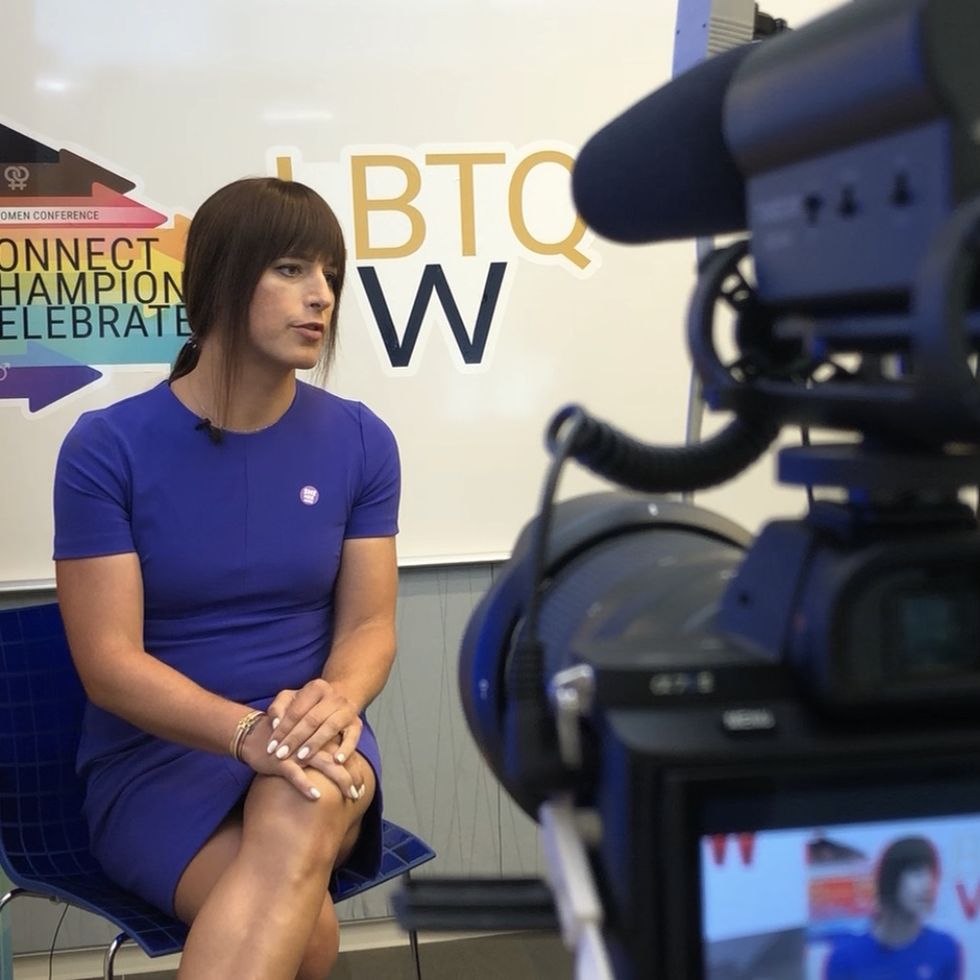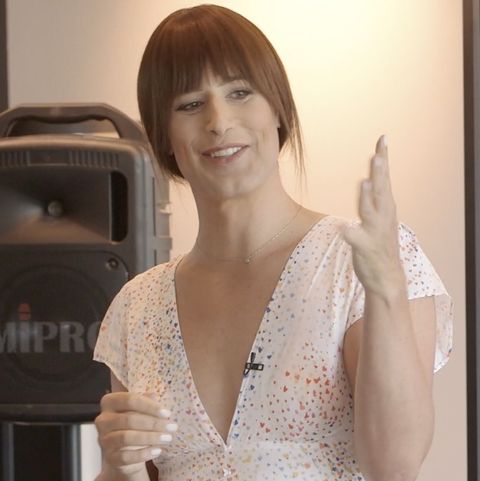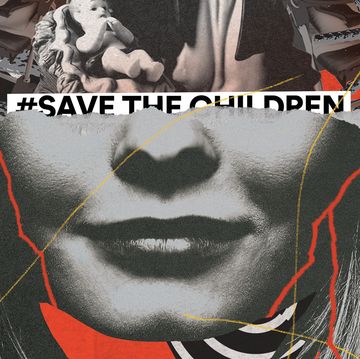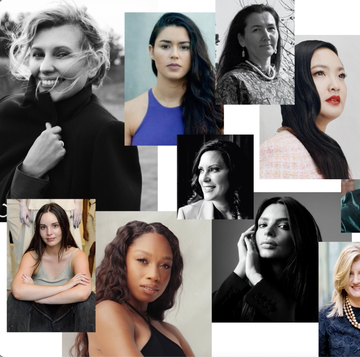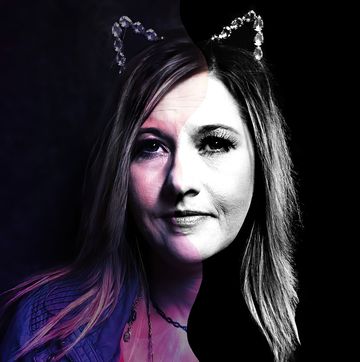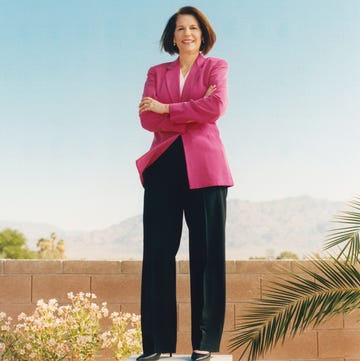Back when entrepreneur Natalie J. Egan was a self-described “bro,” when sports metaphors rolled off her tongue and she tossed Frisbees over employees’ desks, she walked into a board meeting of the tech company she founded, and brought along a scorecard—not for her, but for the board members. “‘I’m gonna create a scorecard for all the people on the board, tallying all of the things you do quarter by quarter to help me in the company, [like] who you’re introducing me to,’” Nate Lentz, managing partner at Osage Venture Partners—one of those board members and an investor in the company—recalls Egan saying. “Which…we hadn’t really seen before.” “Am I remembering this correctly? Was there a promise of a trophy to the winner?” adds David Drahms of Osage, a board observer. Lentz bursts into laughter. “I think there was.”
That was circa 2009, when she was “an asshole and a jerk,” Egan says. But that wasn’t the only thing that was different about Egan back then: She had been assigned male at birth and raised as a boy. Married with three children, Egan took pride in her college-frat bona fides and harsh management style. She was a tech bro—a successful one, raising $7 million in investments for the tech-sales company she founded. Sure, it was the product of hard work, but it was nothing more than she—presenting as a straight white man—thought she deserved. Or so she thought. When Egan began transitioning at 38, and started a second business as a woman, she was in for a rude awakening. Despite her years of experience, once she transitioned, Egan says investors didn’t take her seriously; men talked over her, and she struggled, sometimes literally, to find space at the table. “I remember being in shock, and thinking, ‘Oh, this is what women have been talking about the whole time,’” she says.
Decades of research has established the reality that men and women are treated differently at work, and most women can cite examples of how they’ve been underestimated, passed over, or underpaid. Egan is likely one of the few people who’ve run companies presenting as both a man and a woman. (Trans identities, of course, include a wide range of gender identities and expressions, including people who identify as gender-nonconforming or nonbinary, people who go through medical and social transitions, and much more.)
There aren’t solid numbers on how many transgender entrepreneurs there are in the U.S.; according to a 2016 study by the National LGBT Chamber of Commerce, over 900 small businesses qualified as being majority LGBTQ-owned, of some 28 million small businesses overall. Of those, about 2 percent were trans-owned. While that likely far underestimates the number of trans business owners, Egan’s experience is rare. Presenting as a man, “I had so much privilege that I didn’t realize. When I thought I was getting knocked down, I wasn’t really getting knocked down, relatively speaking,” says Egan, 44. “It’s nothing like what other folks in the world experience who don’t have the amount of privilege that I had as a white, very masculine-presenting person.”
Academic research backs up Egan’s take, showing that if people become trans women, they experience worse outcomes in the workplace; if they become trans men, they experience the opposite. Transphobia is, of course, a factor, and both trans men and trans women, along with people transitioning to other gender expressions and identities, may face difficulties at work during and after transitions. Yet while trans women’s pay falls by about one-third post-transition, trans men’s pay increases slightly, according to a 2008 study.
Other studies have found trans women are also more likely than trans men to experience more difficult work situations, including harassment and resistance from their companies, while trans men’s work evaluations improved post-transition, and overall, they perceived that they received better treatment and more respect. People who’ve transitioned from women to men “may experience male privilege as a result of their transition in a labor market that appears not to be gender neutral,” according to Texas researchers Michelle Dietert, PhD, and Dianne Dentice, PhD. “One thing I keep saying to women is that their perceptions of career and fundraising inequities aren’t just perceptions: Everything that you think is real, is actually real,” says Joseph Schneier, 43, a health care and educational technology entrepreneur who started several companies presenting as a woman and several more as a trans man.
As Egan planned her career, she modeled herself after her father, an intense corporate executive, and her two older brothers, whom she perceived as stereotypically masculine. After her time as a “frat boy” in college, she graduated and embarked on a path that she credited to her ambition and work ethic. Now she sees things in a more nuanced way. “My whole life, if I wanted something, I would pursue it and get it with few exceptions. I was considered really resilient and tenacious,” she says. Then again, Egan was white, presented as male, and had attended a prestigious prep school and an Ivy League college, where she’d developed an influential network of well-placed men. “I took full advantage of it,” she says. “I just didn’t realize.”
In 2009, after jobs in hospitality and tech, Egan started her own business, PeopleLinx, which helped companies use LinkedIn data to sell effectively. Tech start-ups then were “this culture that was rewarding toxic masculinity,” Egan says. And she ran it the way she’d seen other men run companies. She made decisions with little input, based on the idea that “representation and diverse perspectives slow things down,” she says. “I was like, ‘Go, go, go, we don’t have time for your opinion.’ ” If someone was late to a meeting, she’d publicly embarrass them. “It was, like, chest bumps and kegs,” Egan says. “Even as the company grew, we were having arm-wrestling competitions.”
Her executive coach then and now, Russ Rosa, describes it this way: “There was a type of bullying masculinity that Natalie had that didn’t make her very popular.” But popularity didn’t matter; winning did. The company grew to 50 employees. High-profile clients signed on. Venture capital firms speculated that this could be a billion-dollar business. But then LinkedIn changed how it allowed other companies to access its data, endangering PeopleLinx’s core business. Egan appointed a friend as CEO so she could focus on sales, but the company was circling the drain. In 2015, the new CEO fired Egan, and she had no idea how to handle it. “It was the first time I wasn’t getting what I wanted,” she says.
Her personal life was also fracturing; she’d married at 23, had three children, and lived in a horsey Philadelphia suburb, but nothing seemed right anymore. In fact, nothing had ever seemed quite right, when she thought about it. At five, when Egan crept into her mom’s closet and tried on a silk slip, and her mom found her, “my heart almost stopped,” she says. “I remember promising that I would never, ever, ever do anything like that again because I was a boy,” she says. And although she loved sports and building Lego models, “secretly, I wanted to be playing house,” Egan says, but “I never allowed myself to do that.” In private, as a teenager, she might try on women’s clothes, then rip them off, feeling disgusted.
When Egan married, she told her wife she experimented with wearing women’s clothing, like underwear or swimsuits, “but just a little bit,” she says. The couple didn’t address it much, and Egan kept the practice quiet even as she started doing it more, bringing women’s clothes on business trips to wear in hotel rooms. In her mind, she was a “heterosexual cross-dresser,” she says. By the time she was fired from PeopleLinx, the couple’s marriage was in trouble; they ended up splitting about six months later.
Egan thought there was a clear reason so much had gone so wrong: “I have a cross-dressing problem. It’s destroying my life. It ruined my marriage,” she remembers thinking. When she saw a Facebook post from a college friend who had transitioned, Egan set up a meeting with her in New York in fall 2015. Egan explained the issue and said, “I’m wondering if you know how to quit cross-dressing.” Instead, the friend came to her hotel room, helped with her makeup, and gave her the confidence to go out in public in women’s clothes for the first time.
Egan, terrified, forced herself through the hotel lobby and outside into a park. She remembers a gentle wind ruffling her skirt and her hair. “It was the most euphoric moment that I think I’ve had in my entire life. All of a sudden, everything I’d wanted and needed and was always seeking seemed to come to this standstill and calmness,” she says. Her friend linked arms with her, and Egan looked around the park and saw a pair of other women linking arms, and it hit her. “This is what I’ve been missing: I’m a woman; I should’ve been a woman. I’m trans. All of a sudden, my entire life, which never made any sense to me, made total sense,” Egan says.
But the next morning, hung over, Egan panicked at what identifying as a trans woman at age 38 meant. “My immediate reaction—the only thing I can do, the only answer—is to kill myself,” she says. Egan had a shotgun back in Pennsylvania, and she planned to drive home fast and do it quickly. Still drunk, she stumbled to a bodega to buy water, her eyes rimmed with last night’s makeup, before she got in the car. There, at the bodega, standing in line in front of her, was a college “bro” friend. He said Egan looked like hell and steered her to a bench outside. “What’s going on?” he asked. And she, figuring things couldn’t get worse, told him: “I’m trans.” He looked her straight in the eye, she remembers. “And he’s like, ‘You gotta be you.’” That simple reaction from her friend gave her a way forward. If he could understand it, maybe her father, her brothers, her soon-to-be-ex-wife, and her kids could, too. And maybe if all of them could handle it, she could as well.
The first time it hit Egan how differently she might be treated in her new presentation, she was at a car dealership—the same dealership where she had previously purchased two vehicles. It was fall 2015, and Egan, planning on getting a new SUV, expected the usual skilled upselling that she’d gotten—and, as a salesperson, admired—in the past. She’d just started transitioning and told the salesman that her name was now Natalie and her pronouns were she and her. The man didn’t look her in the eye, didn’t shake her hand. “They were acting like I didn’t know anything, and this is my third car that I’d bought from them,” Egan says. “They were explaining things from a man’s perspective, as if I couldn’t understand them, and I started to see everything differently. These transactions had never gone like this. I had never experienced this kind of disrespect in these situations.”
Egan assumed she was getting these reactions because “everybody hates me because I’m trans,” as she puts it. Then she mentioned to a friend that she now was afraid to walk by construction workers because they might catcall her or make fun of her. The friend said, “‘That’s not because you’re trans. That’s because you’re different. They would do that to anybody who’s walking by who’s different from them. You’re a target if you’re overweight, if you’ve got a disability, if you’re an ugly woman, if you’re a good-looking woman, if you’re a queer man,’” Egan recalls. With that, in a moment, Egan viewed the world in a different way. It wasn’t just because she was trans. It was because, having left the identity of a successful white man behind, she was experiencing marginalization and vulnerability, and “anyone who wasn’t inside the center of power was experiencing this to a different degree,” she says.
That gave Egan the idea for Translator, her current company: “Technology to help us understand each other,” she says. She began by consulting with clients, offering advice on respecting and retaining transgender employees, and quizzing them on what they’d want from a tech product. When one client said its employees “‘are not ready for an app to teach them about other people. We need an app that will teach our employees about themselves,’” Egan says, “I was like, ‘Boom.’”
Translator works with Diversity, Equity, and Inclusion and Human Resources departments at companies like Claire’s and ViacomCBS. In most of its offerings, a live facilitator takes employees through digital, anonymous exercises and discussions on topics like privilege. Afterward, employees discuss their answers and their feelings about them, with the idea being that this will lead to stronger connections and empathy. Translator then analyzes employees’ aggregate anonymized answers, and the DEI or HR department gets feedback on who its employees are identity-wise and how they’re feeling. The company might add ride-sharing benefits after dark, for example, if it learns that staffers are uncomfortable walking alone at night.
That, anyway, is what Translator is now. In spring 2016, when Egan launched the company, she needed investors to get it to that level. Egan had heard second-time entrepreneurs get backing more easily than novices. “You could say, ‘You lost all your money on PeopleLinx. Why would you back a CEO again?’” says Lentz of Osage. But PeopleLinx’s initial growth had been so strong, and Egan so capable, that Lentz believed “next time there was real potential for her to build a winner.”
Egan set up around 20 meetings with investors, many of whom had backed PeopleLinx. She outlined what she saw coming: a seismic shift in which companies would need to understand—and would pay for—help with diversity and inclusion. But the investors didn’t listen. “They would take the meetings because it would look really bad if they didn’t, but they had absolutely zero intention of investing or, really, even listening,” she says. “I was just so confusing to them—they couldn’t get over what they were seeing.” She wasn’t sure whether it was because she was trans or because she looked like a woman, but she knew it felt awful. The potential investors wandered out; they scrolled through their phones. And Egan realized, it wasn’t the idea—it was her. “I was literally laughed out of the room by the same people who’d invested in my previous business,” she says. “They didn’t take me seriously at all.”
Only two investors from her previous company, including Osage, invested in Translator. Egan, shattered, thought about what it was like for someone who didn’t have her background. “If it’s working against me...I know what I’m doing, and I’ve got the relationships, and it’s still hard.” It brought home “the incredible challenges that any marginalized person faces in an industry that’s dominated by white men, investing in white men,” Egan says.
She kept at it, signing up clients and securing small investments from friends. Yet in meeting after meeting, she’d find the work landscape had changed. “I got mansplained to all the time,” Egan says. “I’m sitting there, and I’m just like, ‘Oh my God, I wish I could record this and play it back to people, because it’s so ridiculous.’” In meetings where there weren’t enough chairs, she found herself standing, and questioned why “I’m trying to take up less space,” and wondered if she was reacting to social conditioning about how a woman “should” behave. Rosa, her executive coach, remembers Egan discussing how she “really had the experience as a woman of not being taken seriously, and not being acknowledged as an equal.”
When Joseph Schneier, the health care and education tech entrepreneur, became a trans man starting in 2016, he experienced the flip side of what Egan did: how advantageous it is to be a man running a company. Schneier, the CEO of Trusty.care, a Medicare distribution company, had developed a fairly pat speech about finding your own vulnerabilities to understand why patients behave in ways that aren’t beneficial to them, like skipping pills. He’d delivered it dozens of times presenting as a woman CEO, always to polite but noncommittal receptions. Once he transitioned, he gave the same speech to a roomful of investors. “They gave me a standing ovation, and they were like, ‘You are so brave.’ I was thinking to myself, ‘There’s just no way.’ I have given this talk, like, a million times over,” he says. That continued in the everyday working world. “The thing that was constantly amazing in the female presentation was how hard I had to push to have my voice listened to. Now there are some days when I haven’t gotten a lot of sleep, and I’ll say something, and I’m like, ‘That was really dumb,’ and people are like, ‘Oh, yeah, really interesting,’” he says.
Egan built up Translator, securing funding from angel investors, many part of the LGBTQ community who understood the potential market. The company has since developed several products, including subscription-based training sessions that provide predictable revenue for the company. But as Translator grew, Egan had trouble leaving some of her old habits behind. When the firm landed a new client, she asked employees to throw their hands into a circle to celebrate, sports-team style. “People were like, ‘No, we’re not doing that,’ and I was like, ‘Nah, nah, c’mon, bring it in,’” she says. Afterward, an employee called her to complain. “They said to me, ‘You’re not being sensitive enough,’” she says. She realized she had a lot more work to do.
These days, Egan has set aside that brash, dismissive leadership style she once constructed based on her impression of how men succeeded in the workplace. Now she has a different notion of how leaders, no matter their gender identity or expression, can establish respect. At a virtual Translator meeting, she’s careful not to overemphasize her power, introducing herself to new employees as “technically, I’m the CEO of the company, although I don’t like the hierarchy.” She offers encouragement: “You do more than that, David”; “That’s a great call, Rachel.” She seeks feedback: “Does that seem unreasonable?”
Talking one-on-one, I ask Egan how she felt after that first glimpse at what starting a company as Natalie looked like, when those VCs rejected her. She sighs, and suddenly looks very tired. “I really believed, probably because of my naïveté about my previous success, that I would be able to bulldoze my way through that. Like, I’d be the exception; I would win.” Now, having experienced the business world as a trans woman, she thinks differently of people who have struggled: “It’s like, ‘Can I walk in those people’s shoes, and understand what it’s like not to have the advantages I always had?’” And through her own struggle, she says, “I’ve become who I always really wanted to be.”
This article appears in the October 2021 issue of ELLE.
Stephanie Clifford is an award-winning journalist writing about criminal justice and business, and author of the bestselling novel Everybody Rise.


